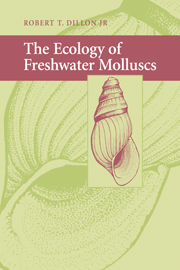7 - Predation
Published online by Cambridge University Press: 11 August 2009
Summary
Molluscs are edible, and easily subdued by predators of even the most modest ferocity. Thus most aquatic vertebrates seem to eat molluscs, at least under some circumstances. I include under this sweeping generalization not only fish, but semi-aquatic vertebrates such as amphibians, certain reptiles, and a few mammals. In a charming review entitled ‘Enemies of the land and freshwater Mollusca of the British Isles’, Wild and Lawson (1937) listed 20 vertebrate predators of Planorbis alone, excluding fish but including such eye-catchers as the natterjack toad, pheasants, and bats. In addition, a large fraction of the macroinvertebrate predators of fresh waters recognize molluscs among their prey. Among the fauna of Oneida Lake, New York, F. C. Baker (1918) recognized six species of insect potentially dining on molluscs, one crayfish, eight leeches, and two of the molluscs themselves (large Lymnaea). To the Oneida rogue's gallery Baker added 46 species of fish, 8 amphibians, 7 reptiles, 6 birds, and 3 mammals. Michelson's (1957) review of possible biological control agents for pulmonates included single paragraphs on predatory flatworms, leeches, crustaceans, predatory molluscs, and mammals, plus two paragraphs on birds, three on reptiles and amphibians, and four on insects. Molloy and colleagues (1997) catalogued 176 predators of zebra mussels.
The present review will proceed from mammals through the vertebrates and into the invertebrates, as predator body sizes decrease and densities rise.
- Type
- Chapter
- Information
- The Ecology of Freshwater Molluscs , pp. 273 - 325Publisher: Cambridge University PressPrint publication year: 2000



